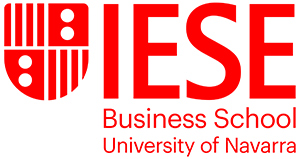Don’t you wish you could be more creative at work? Only one in four employees feels that they are fulfilling their own creative potential – even though most everyone agrees that creativity is more important than ever in today’s fast-changing, competitive workplace. Creativity leads to innovation, which is both a competitive advantage for companies and a driver of economic prosperity.
Unlock your company’s creativity in 5 steps
How can you close that gap between potential and reality? And how can you make sure that the people around you are also being as creative as they possibly can? Tom Kelley, partner of industrial design firm IDEO, spoke at the IESE Global Alumni Reunion in Madrid, offering his thoughts on developing creativity. “We don’t have to give anyone creativity,” Kelley says. “We just have to unlock it. It’s there.”
Step 1: Work on your creative confidence
Creative confidence is a combination of two things: our natural ability to come up with ideas, and gathering the courage to act on them. The good news is that, for Kelley at least, everyone is born creative – hence the abundant creativity of children.
That means it’s a matter of recovering your innate creativity and working on the other aspect: courage. Raise your hand during the meeting and put forth that new idea. Many people assume that a high-level executive would feel comfortable proposing ideas, but making outside-the-box suggestions is entirely different from solving routine problems. Creating the right atmosphere is key, which leads to Step 2.
Step 2: Remember that everyone is creative
It’s not just a question of your own creative confidence levels. It’s important to create a workplace atmosphere that is receptive to fresh ideas, where everyone feels comfortable raising their hands to propose solutions that can be built on by the rest of the team.
You may need to adjust your vocabulary. What we say and how we say it can have a profound impact on creative culture. Swap “I can’t” and “We can’t” for “Let’s see how we can…”
This doesn’t have to mean looking outside your company and bringing in new creative talent. Often, it’s worth the effort of raising the creativity quotient of the people who are already in place, who bring institutional knowledge and experience to the equation. Surround yourself with professionals who have wide and varying experience in their fields, who take a multidisciplinary approach, who enjoy working in teams and who believe that the impossible is possible.
So you and your team are ready to be creative. Now what?
Step 3: Empathy makes a good starting point
Don’t just think about your company’s product or service. Think about all those people who use them. Mix technology with humanity. Try to find a part of your customers’ experience with your company that is more complicated than it needs to be, and seek ways to simplify. Ask yourself: What do people really need? Answering this question is not always easy, but once you have, it’s just a matter of putting into action the creative process in order to meet that need. Don’t be afraid to ask why you and your company do things the way you do them. If the answer is just “Because we’ve always done it that way,” that might not be good enough.
Keep in mind that design is not innovation. Design is the process and innovation is the result. We are creative when we seek solutions to problems, but we are innovative when the products, services or procedures that we design are truly useful and at the same time generate value for the company.
Step 4: Experiment often and widely
Lose your fear of failure and persevere. This without doubt is linked to a workplace atmosphere that allows for failure. Trial and error is crucial to innovation. You have to start out knowing that not all proposals are destined for success, but that not all mistakes are synonymous with failure. One popular myth is that creative geniuses never fail. But nothing is farther from the truth. Great inventors such as Thomas Edison, Alexander Graham Bell and Henry Ford made lots of mistakes, but they stuck to it. Edison famously said: “I have not failed. I’ve just found 10,000 ways that won’t work.” At the end of the day, successful innovators are willing to fail as many times as it takes in order to reach their final goal.
Step 5: Tell a story to sell your idea
This is tied to taking a more human-centered approach to problems. Storytelling has been shown to be an incredibly powerful communication tool. For this reason, as you advance along the creative process, it is important to find a compelling narrative to ensure that your innovation is understood. Leverage the power of storytelling. “If you have the right data, the right technology and the right story, you can build a valuable company,” says Kelley.
IESE’s executive education programs are ideal to give you the confidence and competencies you need to become an even more creative, effective executive, with immediate benefits for you as a leader and for your team and organization.
Additionally, in our portfolio of focused programs, you can find short programs specifically designed to foster innovation, such as: Design Thinking: From Strategic Transformation to Business Impact and Digital Mindset: How to Innovate and Lead Your Business for the Future.
Read the article: How to lead a high-performance team

















